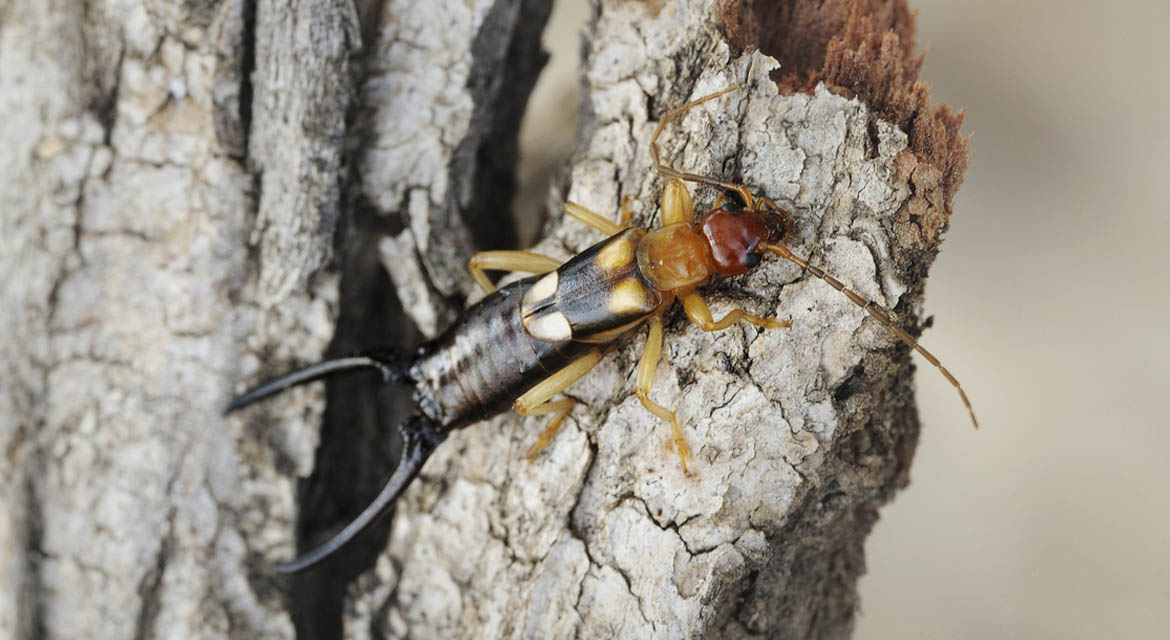Earwig Facts & Information
Earwig Overview
Earwigs are small, nocturnal insects belonging to the order Dermaptera, characterized by their distinctive pincers or forceps-like appendages at the end of their abdomen, which are used for defense and mating. These insects are found in various parts of the world, with a diversity of species adapted to different habitats. Despite their intimidating appearance, earwigs are generally harmless to humans and feed on a variety of organic matter, including plants, insects, and decaying materials. They are known for their secretive behavior, often hiding in crevices during the day and emerging at night to forage for food. While the name “earwig” may suggest they crawl into human ears, such occurrences are extremely rare. Overall, earwigs play a role in ecosystems by helping to decompose organic matter and control certain insect populations.
What do Earwigs Look Like?
Earwigs are easily recognizable by their unique physical characteristics. These insects typically measure between 5 to 25 millimeters in length, with slender, elongated bodies. Their most distinctive feature is the pair of forceps-like appendages at the end of their abdomen, known as cerci or pincers. These pincers can vary in size and shape between species but are used primarily for defense and mating. Earwigs also have a pair of membranous wings folded underneath protective forewings, although many species are poor or non-fliers. Their coloration varies but often includes shades of brown or black, occasionally with reddish or yellowish hues. Earwigs also have a pair of prominent antennae on their heads and a segmented, cylindrical body with a flattened appearance. These unique physical traits make earwigs easily distinguishable from other insects.

Not the pest you are looking for?
Check out our pest library to see what other pests we have articles on
Earwig Treatments
Controlling earwig infestations typically involves a combination of preventive measures and targeted treatments. To prevent earwigs from entering homes, it’s essential to seal cracks, gaps, and openings in doors, windows, and foundations. Reducing excess moisture around the house can also discourage them. For immediate control, traps baited with materials like rolled-up newspaper or pieces of cardboard can be placed in areas where earwigs are active. Chemical pesticides, both insecticides and desiccants, can be used as a last resort, but it’s important to follow label instructions carefully and exercise caution to minimize harm to non-target organisms and the environment. Integrated pest management (IPM) approaches, which combine various strategies, are often the most effective and environmentally friendly ways to manage earwig infestations while minimizing the use of chemical pesticides.

